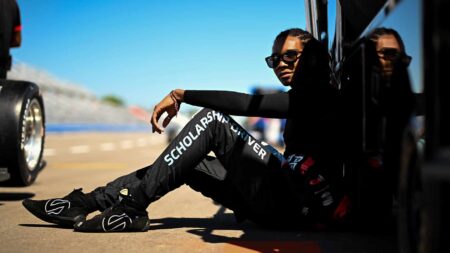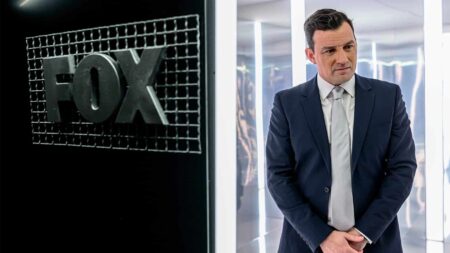
Lundgaard: McLaren can make history with F1/IndyCar double win
Christian Lundgaard is McLaren's new IndyCar star – and wants to make history by helping the team win both in F1 at Bahrain and at Long Beach Stateside on the same day
This week I’m going to explain why I believe Mark Donohue and the remarkable Can-Am turbo Porsche 917/30K deserve places in Motor Sport’s roll call of racing’s greatest drivers and cars.
It was good to see Donohue featured in the latest issue of the magazine in Guy Allen’s ‘Racing Lives’, but for reasons I find unfathomable both Donohue and the 917/30K were missing from the recent listings of great drivers and cars posted here on the website.
Donohue was Penske Racing’s original number one driver and team leader in the team’s formative days from 1966-75. He studied engineering at the Ivy League Brown University and was a very serious, deeply driven man who served as Penske’s team manager, chief engineer and sometimes truck driver and floor sweeper in addition to his duties as a driver.
Donohue won three Trans-Am championships between 1968-71 when that series was at its historic height, scored Penske’s first Indy 500 victory in 1972 and won the 1973 Can-Am title in Penske’s incredible Porsche 917/30K.

Donohue in Penske’s Porsche 917/30K. Credit: Dan Boyd
Donohue retired at the end of 1973 but returned a year later to race Penske’s new F1 car at the end of 1974 and into ’75. It turned out to be a tragic decision because he was killed midway through the ’75 season during race day morning warm-up for the Austrian GP. Donohue may not have made his mark on F1 but he defined Penske Racing and is fondly remembered by many of us as one of the most astute and complete racers the sport has ever seen.
Roger Penske started his race team in 1966 and hired Donohue to drive a Lola T70 in the United States Road Racing Championship and the inaugural Can-Am series. Donohue won three races that year and the following year he won the USRRC title for Penske and also raced in the Can-Am and Trans-Am series.
In 1968 Donohue repeated as USRRC champion, won the Trans-Am title for the first time and finished third in the Can-Am behind the factory McLarens. Penske also made the move into Indycars in ‘68 with Donohue racing an Eagle-Chevy in a pair of USAC road races at Mosport and Riverside.

Donohue in Penske’s McLaren at the Riverside round of the 1968 Can-Am championship
Donohue started 1969 by winning the Daytona 24 Hours driving a Lola-Chevy T70 coupé with Chuck Parsons. He again won the Trans-Am championship in ‘69 and also made his and Penske’s rookie start at Indianapolis aboard a turbo Offy-powered Lola T152.
In 1970, Penske’s primary effort went into running a pair of AMC Javelins in the Trans-Am series for Donohue and Peter Revson but Donohue raced a 4WD Lola-Ford turbo at Indianapolis, finishing second to Al Unser. He ran three other USAC races that year and also raced a Lola-Chevy in three SCCA Formula 5000 races, winning at Mosport and Sebring.
Donohue’s plate was extremely full in 1971. He won Penske’s third Trans-Am championship, this time for American Motors; co-drove Penske’s Ferrari 512M with David Hobbs at Daytona, Sebring, Le Mans and Watkins Glen; ran the Canadian and United States GPs in a Penske-prepared McLaren M19, finishing third in his F1 debut at Mosport; raced an F5000 Lola in the Questor Grand Prix in California; and ran nine USAC Championship races, Indy 500 included.
Penske switched to McLaren’s new wedge-shaped M16 Indycar in ‘71 and Donohue scored Penske’s first Indycar win in the Pocono 500 in July and also won a 200-mile race at Michigan two weeks later. But Donohue was out of luck at Indianapolis after setting the pace through practice and leading the race’s opening 50 laps before top gear broke.
The following year Donohue came through to win the Indy 500 in his and Penske’s fourth try after team-mate Gary Bettenhausen led 138 laps and appeared to have the race in the bag until an ignition rotor broke. But three weeks after winning at Indianapolis Donohue crashed while testing Penske’s new Porsche 917/10 Can-Am car at Road Atlanta when the rear bodywork broke loose while in the fastest section of the track.
The 917/10 hit the bank hard, cartwheeled down the road and comprehensively destroyed itself. Donohue was lucky to escape with nothing worse than a broken left leg, but he was out of action for a couple of months. Penske chose George Follmer to replace Donohue in the Can-Am Porsche and he went on to win the championship beating the factory McLarens of Denny Hulme and Peter Revson. Donohue returned to action for the year’s last four races and won at Edmonton after Follmer had to stop to replace a punctured tyre.

Follmer in the 1972 917/10 at Watkins Glen
In 1973 Donohue concentrated on the Can-Am series with the amazing Porsche 917/30K which was the magnum opus of his career. He spent the winter testing and developing the car working first at Weissach in Germany, then in the United States.
The 917/30K enjoyed a longer wheelbase than the 917/10, much improved aerodynamics and more power – as much as 1100bhp – from the latest 5.4-litre engine. It was substantially quicker by some 15mph on the straightaways than the previous year’s car.
Penske ran just one Can-Am car in 1973 for the fully recovered Donohue who ran away with the championship. He was on the pole for every race and won the last six races in a row with little or no opposition. Knowing they were out-powered by the turbo Porsches the McLaren team quit Can-Am prior to that year and Donohue’s only serious competition came from Follmer driving a 917/10 for Bobby Rinzler and a youthful Jody Scheckter aboard another 917/10 run by Vasek Polak.

Donohue leads Follmer, Scheckter, Hobbs, Haywood and Kemp
A mark of the 917/30K’s speed was Donohue’s pole lap at Elkhart Lake, more than three seconds quicker than Scheckter and Follmer. I’ll always remember Donohue pushing his 917/30K around Elkhart Lake’s fast, four miles, turbo spooling up, tyres chirping as they broke away under power with each gear change as he became the first man to break the two-minute barrier around the USA’s finest road circuit. Eleven years would pass before Mario Andretti, driving a Lola Indycar, was able to break Donohue’s Elkhart track record.
Donohue was deeply engaged in the preparation, engineering, development and racing operations of his cars like other rare birds from the ‘60s and ‘70s such as Jack Brabham, Bruce McLaren, John Surtees, Dan Gurney, AJ Foyt and Andretti. Today, there’s nobody in the sport quite like them. Nor are there cars like the 917/30K.
More from Gordon Kirby
American greats: Milton, Murphy and Lockhart
Daytona 24 Hours aftermath
Parnelli’s record run in the Baja 1000

Christian Lundgaard is McLaren's new IndyCar star – and wants to make history by helping the team win both in F1 at Bahrain and at Long Beach Stateside on the same day

Louis Foster starts his IndyCar journey this weekend in St Petersburg – can he emulate other British heroes like Nigel Mansell and Dan Wheldon?

Myles Rowe has rocketed through IndyCar's junior ladder with a story like no other – he tells James Elson why this upcoming year is more important than ever

Drive to Survive star Will Buxton has made the jump across the Atlantic to front Fox's new IndyCar coverage – he explained to James Elson why he thinks the championship is the most exciting series out there